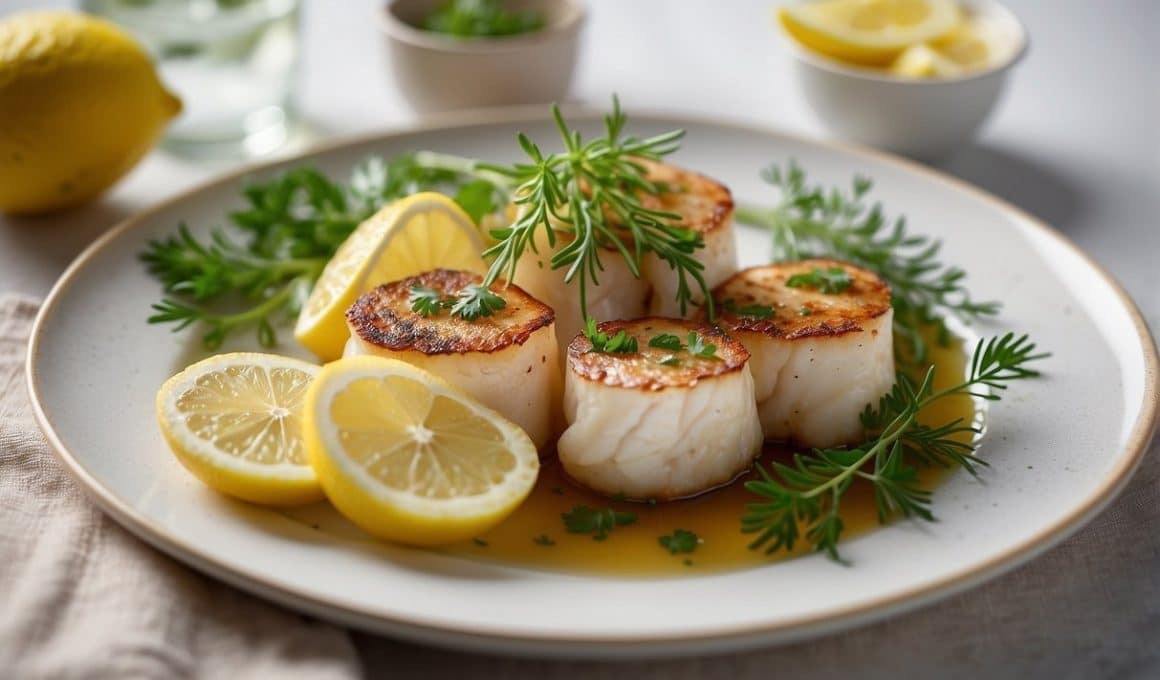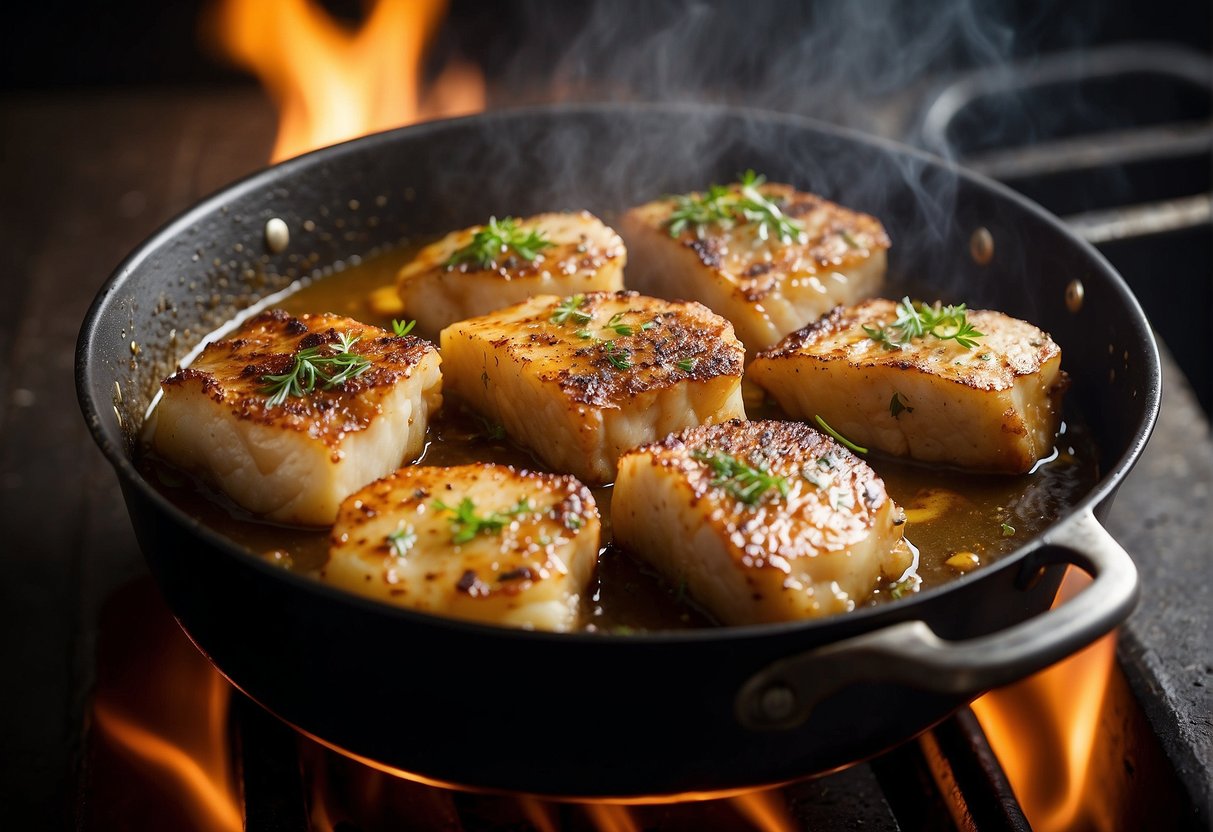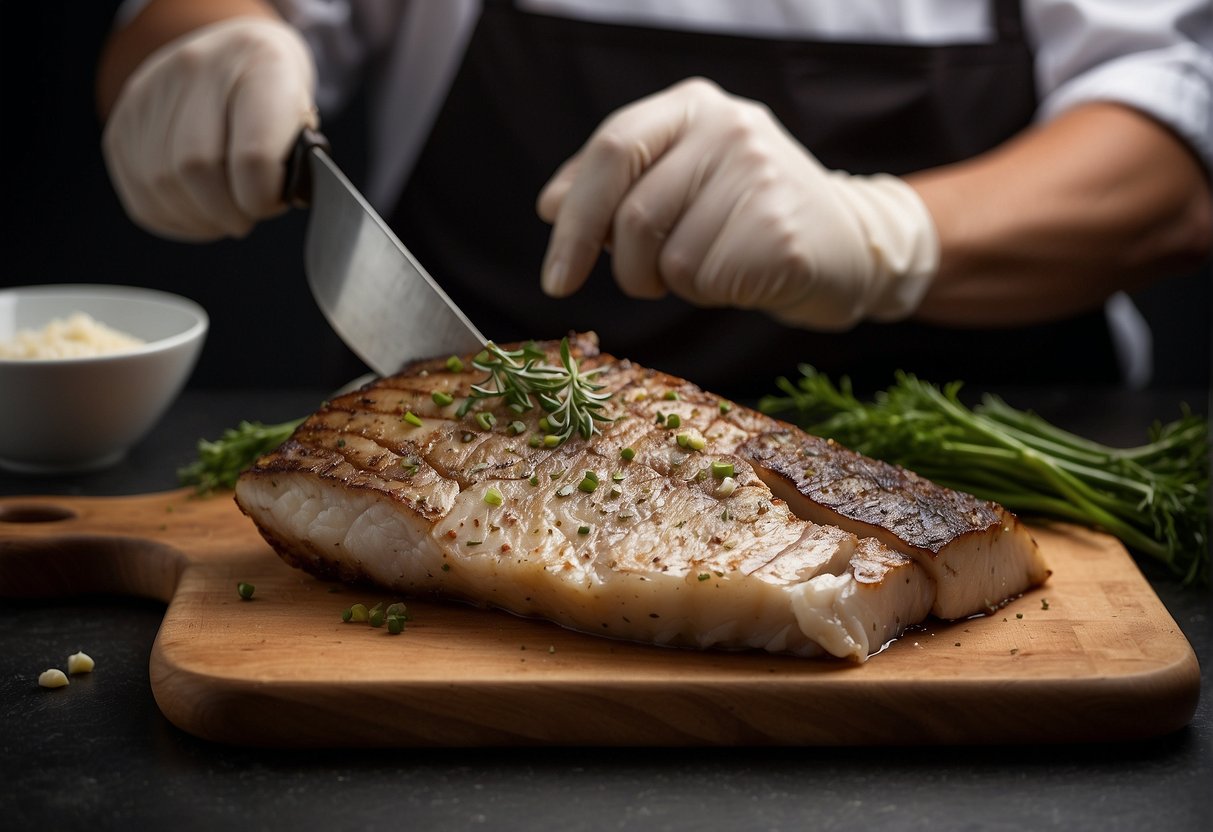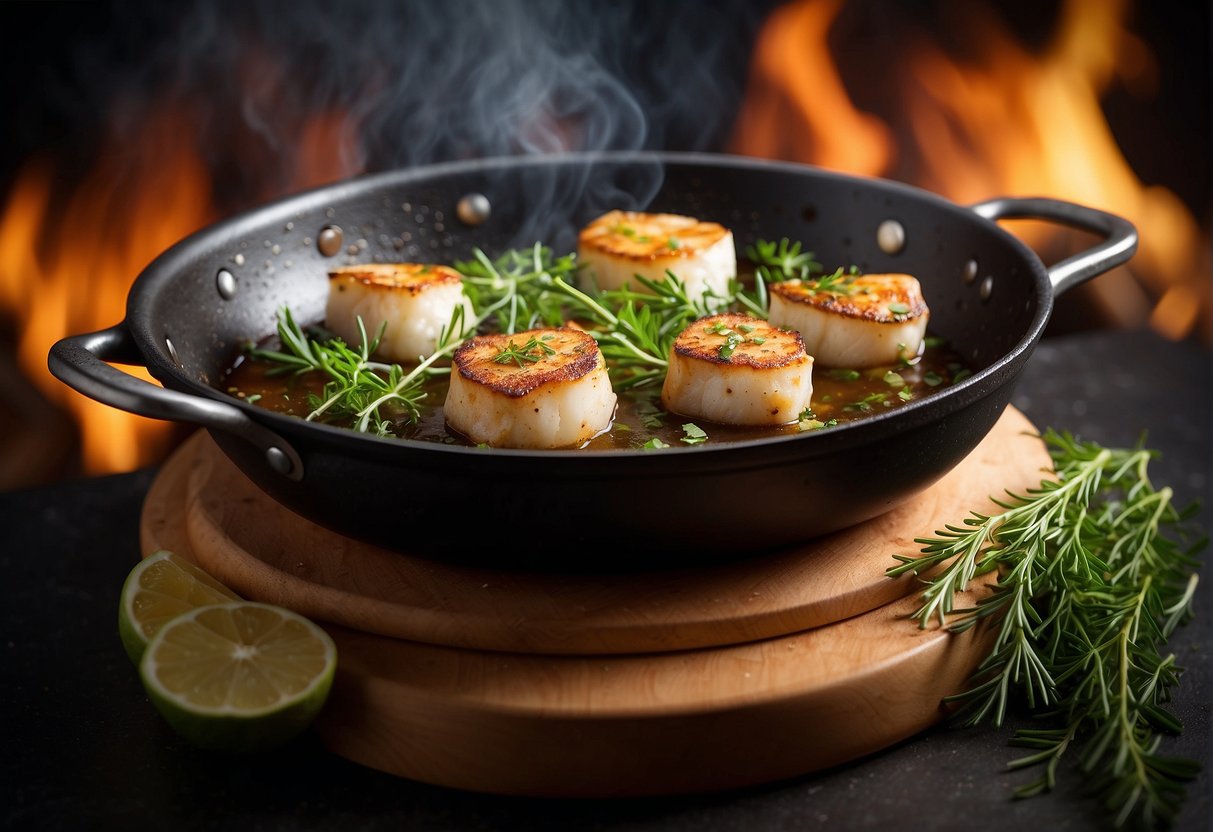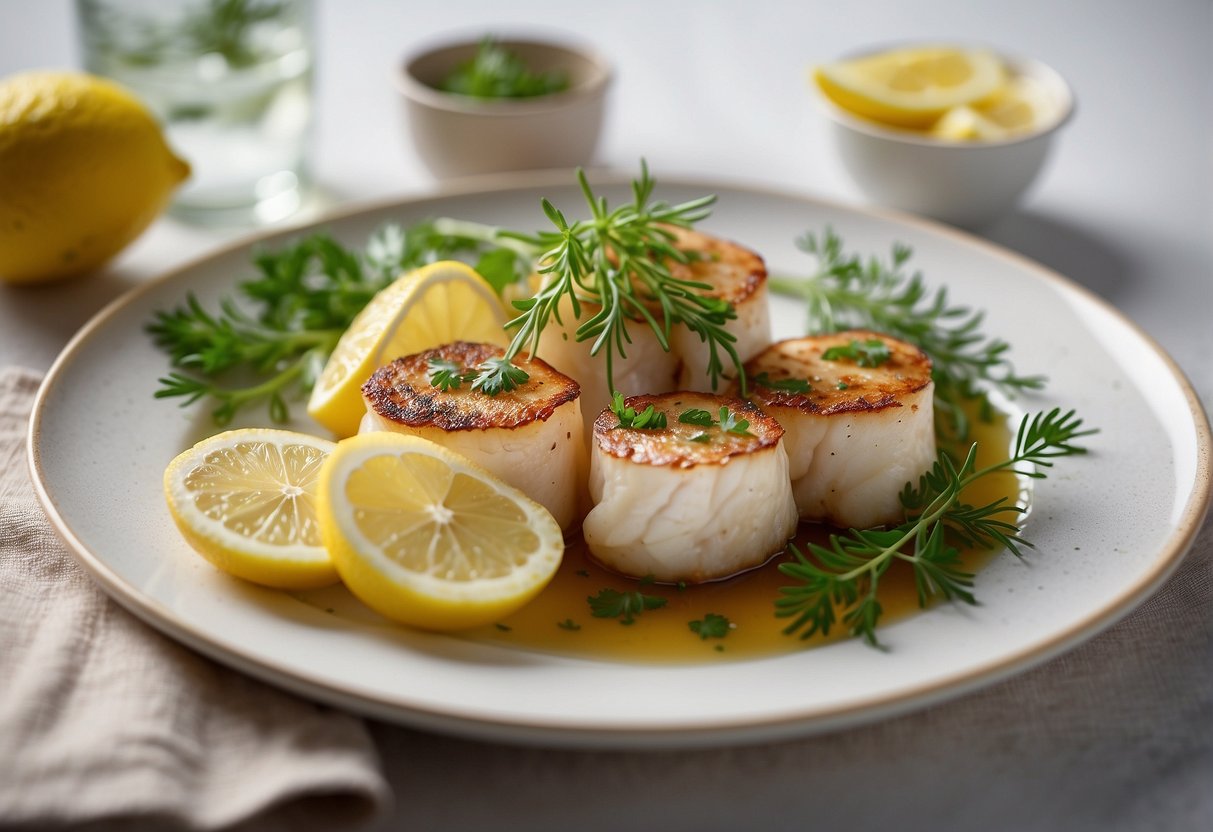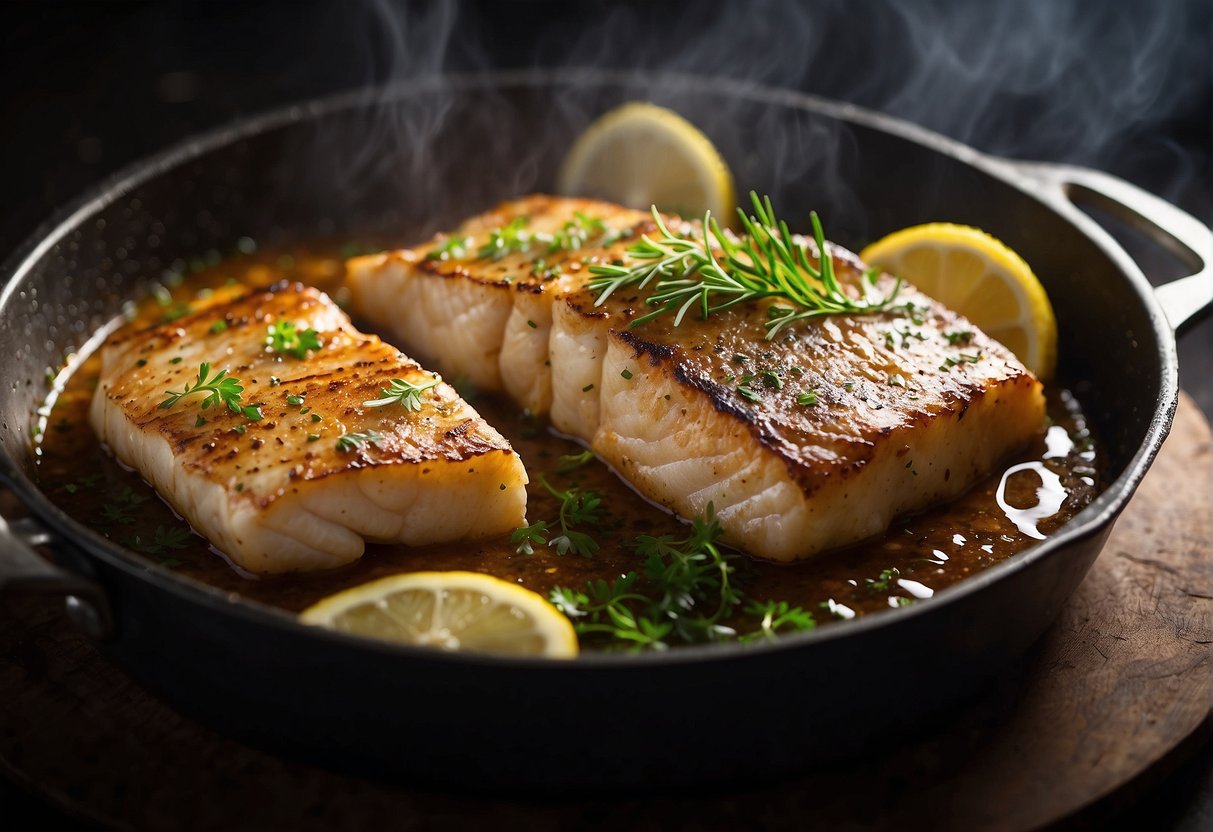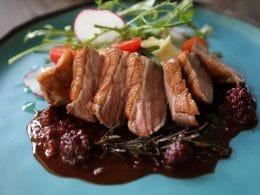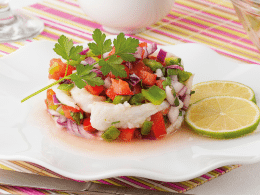Cod cheeks, often overlooked in favor of more popular cuts, are a culinary secret waiting to be discovered. Harvested from the facial area of a codfish, these morsels of meat offer a sweet and delicate flavor that is both unique and delightful. As sustainable seafood becomes more important to consumers, cod cheeks emerge as both an ethical and tasty choice. With a texture that is often compared to scallops, these portions of fish are adaptable to various cooking methods and can be found with increasing frequency at fishmongers or online.
Preparing cod cheeks starts with knowing what to look for: Select cheeks that are firm and have a fresh, mild scent indicative of good-quality fish. Cheeks should be skinless and boneless for convenience. The preparation is straightforward; it can include coating them in flour or breadcrumbs, or simply pan-frying them to retain their natural flavor profile. When cooked correctly, cod cheeks are tender and succulent, making them an impressive addition to any dish.
Key Takeaways
- Cod cheeks are a sustainable and delicate-flavored seafood option.
- Fresh, firm, and mildly-scented cheeks are indicators of quality.
- Versatile in cooking, they can be prepared using various techniques for a tender result.
Overview of Cod Cheeks
Cod cheeks are a distinctive part of the fish, located on the head just below the eyes. As a seafood enthusiast, I’ve come to appreciate cod cheeks for their delicate, succulent texture, which is reminiscent of scallops. These morsels are notably boneless and skinless, making them a cherished delicacy among those who prefer uncomplicated preparation and pure indulgence in flavor.
Preparation and Cooking
Cooking cod cheeks can be quite straightforward. They are typically pan-fried to achieve a golden-brown exterior while preserving a soft, flaky interior. Their versatility allows them to be paired with a variety of sauces and condiments, enhancing their mild, sweet taste.
Nutritional Profile
- High in Protein: Cod cheeks are rich in lean protein.
- Low in Fat: They are a healthier alternative, as they contain minimal fat.
- Rich in Nutrients: Cod cheeks provide essential vitamins and minerals integral to a balanced diet.
In my culinary explorations, I’ve noted that cod cheeks have no bones and require minimal preparation, which is ideal for those seeking convenience without compromise in quality. Their unique texture and flavor profile position them as a gourmet food that’s gradually gaining more recognition in the culinary world.
Selecting Quality Cod Cheeks
When I choose cod cheeks, I pay close attention to their texture and freshness; these are crucial indicators of quality. I prefer to buy cod cheeks that are firm and bouncy to the touch; they shouldn’t feel mushy. The surface should be glossy, not dull, indicating they are freshly cut.
Regarding freshness, the smell is a telltale sign. Quality cod cheeks should have a clean, almost sweet, seawater scent. If there’s any hint of a strong fishy odor, I avoid purchasing, as this suggests they are not fresh.
Here’s a simple checklist I follow:
- Texture: Firm, bouncy, and glossy
- Smell: Light, fresh seawater scent
- Appearance: Clear eyes and bright red gills if they are still in the head
When available, I opt for cod cheeks that are still within the head as you can check the eyes and gills of the cod for ultimate freshness—the clearer the eyes and redder the gills, the better.
Lastly, if you’re considering frozen cod cheeks, ensure they are well-packaged with no signs of freezer burn, such as ice crystals or discoloration. I always prefer fresh over frozen, but quality frozen cheeks can be a convenient alternative.
Preparation Essentials
Before starting to work with cod cheeks, it’s crucial to understand how to handle and prepare them properly. Proper cleaning, seasoning, and cooking techniques will ensure a delicious outcome.
Cleaning and Storage
When handling cod cheeks, it’s important to clean them thoroughly. I make sure to drain any excess liquid and pat them dry with a paper towel. Cod cheeks should be stored in the fridge if they’re to be used within a day or so. For longer storage, freezing is an option, ensuring they’re wrapped well to avoid freezer burn.
Basic Ingredients
Every great dish starts with simple, quality ingredients. For cod cheeks, I keep salt, pepper, olive oil, and lemon on hand. They enhance the natural flavors without overpowering the delicate taste of the fish. A garlic clove finely minced, and some chopped parsley can add depth to the dish.
Tools Required
For preparing cod cheeks, the tools needed are relatively simple. A sharp knife is essential for any prep work, while a heavy skillet or saucepan is needed for most cooking techniques. Occasionally, a food processor might be necessary for creating finer crumbs or marinades.
Initial Preparation Steps
The first step is to make sure the cheeks are free from any membranes or undesired parts. I then season the cheeks with salt and pepper, maybe adding lemon zest or lime juice to begin layering flavors.
Seasonings and Marinades
Enhancing the cod cheeks with additional flavors can take the dish to the next level. I often create a simple marinade consisting of olive oil, thyme, and capers. The key here is not to overpower the natural flavor of the fish, so I use all seasonings sparingly.
Cooking Techniques
There are several ways to cook cod cheeks, but frying is my preferred method. In a hot skillet with a bit of olive oil, I move the cheeks around gently as they sauté. It’s important not to overcrowd the pan to allow each cheek to brown properly. Other methods like baking or grilling are also great options for a healthier preparation.
Cooking Cod Cheeks
When I prepare cod cheeks, I ensure the delicate texture is central to the cooking process. I employ methods like pan-frying for a crisp exterior and offer alternative approaches for varied textures and flavors.
Pan-Frying Method
For pan-frying, I start by patting the cod cheeks dry and seasoning them with salt and pepper. I then dredge the cheeks in flour to create a light coating. In a skillet, I heat a mixture of butter and olive oil over medium-high heat until hot but not smoking. I lay the cheeks in the skillet and cook for about 3-4 minutes per side, achieving a golden-brown crust with a tender, flaky interior.
Alternative Cooking Approaches
Aside from frying, there are other methods to cook cod cheeks to perfection. Baking in an oven preheated to 400 degrees Fahrenheit takes about 10-12 minutes for cod cheeks to cook thoroughly, which can be served with a sauce or broth. On the other hand, methods like poaching and steaming are gentler, requiring a watchful eye to keep the cheeks succulent. An aromatic broth for poaching or seasoned steam can infuse the cod cheeks with subtle flavors while preserving their moistness.
Serving Suggestions
When I prepare cod cheeks, my focus is always on complementing their delicate flavor while ensuring a visually appealing presentation. I select sides and condiments that enhance the dish without overpowering it, and I pay close attention to the plating to create an inviting dining experience.
Recommended Accompaniments
For sides, I often pair cod cheeks with roasted new potatoes or skinny oven chips for a satisfying contrast in textures. If I’m aiming for a lighter meal, a side of fluffy rice or steamed greens like broccoli or peas complements the dish well. The choice of side often depends on whether I’m serving the cod cheeks for a casual meal or a more formal dinner.
Condiments and Sauces
A good sauce can elevate the cod cheeks to a new level. I prefer a simple tartar sauce or mayonnaise for a classic approach. When I’m feeling more adventurous, a caper lemon butter sauce adds a flavorful zing that brings out the natural sweetness of the cod. It’s important to serve these condiments on the side to allow everyone to customize their plate to their taste.
Presentation Tips
I’ve found that the key to a great presentation is simplicity and color contrast. I plate the cod cheeks with a garnish of lemon wedges to add a pop of color and provide a fresh flavor accent. When arranging the meal, I ensure each element is visible and placed with intention, with garnishes neatly applied. Whether it’s a sprinkling of fresh herbs or a drizzle of sauce around the plate edges, these small touches make the dish visually appealing and restaurant-worthy.
Flavor Enhancements
Enhancing the delicate flavor of cod cheeks is an art that involves balancing herbs, spices, and other ingredients to elevate the overall taste. I’ll guide you through several options to maximize the flavor potential of this delectable seafood.
Herbs and Spices
I find that cod cheeks, with their tender texture, pair beautifully with a variety of herbs and spices. A classic combination involves a sprinkling of sea salt and cracked black pepper to enhance their natural sweetness. Adding parsley can bring a fresh, grassy note, while chilli adds a kick that complements the softness of the fish. For those who admire a hint of freshness, mint is a surprising yet delightful partner for cod cheeks.
- Seasoning Mix for Cod Cheeks:
- Sea salt
- Cracked black pepper
- Chopped parsley
- Chilli flakes (to taste)
- Finely chopped mint (optional)
Acidic Accents
Incorporating acidic accents like lemon or lime can cut through any richness and brighten the flavor profile of cod cheeks. I regularly apply a squeeze of lemon juice to highlight the mild taste of the fish. For an even deeper citrus character, caramelised lime offers a touch of sweetness along with its zesty zing.
- Citrus Accents:
- Lemon juice or wedges
- Lime zest or wedges
- Caramelised lime slices
Umami Rich Additions
To infuse an umami dimension into cod cheeks, consider chorizo for its smoky and savory qualities. This robust sausage not only provides depth but also imparts a beautiful color to the dish. Alternatively, adding prawns can enhance the seafood flavor, creating a more complex and richer taste experience.
- Additions for Depth:
- Sliced chorizo
- Whole or chopped prawns
By carefully selecting these flavor enhancements, you can transform the subtle taste of cod cheeks into a truly memorable dish that’s full of character and warmth.
Recipes Featuring Cod Cheeks
Cod cheeks are a delicious and tender part of the fish that offer a great base for a variety of recipes. Below, I have outlined some classic methods and innovative twists to making cod cheeks a standout dish in your cooking repertoire.
Classic Cod Cheek Recipe
For a traditional dish, my go-to is Cod Cheeks in Panko Breadcrumbs. This simple yet satisfying method requires coating the cod cheeks with flour, beaten eggs, and a sprinkle of salt and pepper. The cheeks are then covered in panko breadcrumbs and either deep-fried or baked until they achieve a perfect crunch. This technique emphasizes the naturally mild and sweet flavor of the cod with the contrasting texture of the breadcrumbs. For a crisp finish, ensure your oil is hot enough if frying, or if baking, preheat the oven appropriately to achieve the ideal golden brown crispiness.
International Variations
I find that cod cheeks adapt beautifully to various international flavors. For example, the Basque region inspires a recipe that involves cooking the cheeks with chorizo, spring onion, and a hint of spicy paprika, releasing a beautifully spicy and smoky flavor. In another variation, pairing cod cheeks with caper & lemon butter incorporates a refreshing zesty taste that complements the fish’s natural succulence. Both recipes require careful attention to the cooking time to preserve the delicate texture of the cod cheeks.
Creative Fusions
Exploring creative fusions can lead to exciting new dishes. Incorporating flavors like parsley-infused flour when pan-frying adds a fresh herbal note to the dish. Alternatively, crafting a cornmeal crust can give your cod cheeks a Southern twist, delivering a different yet delightful crunch. Whether you’re whipping up Cornmeal Crusted Cod Cheeks or poaching them for a gentle flavor, these fusions can transform the ingredient into something unexpected and delicious. Be sure to balance the boldness of your crust or sauce to let the subtle taste of the cod cheeks shine through.
Pairing with Drinks
When I select drinks to accompany cod cheeks, my focus is on complementing their delicate texture and sweet, mild flavor. The goal is to choose beverages that enhance the dish without overwhelming its subtle taste.
Wine Pairing
To match the light, flaky nature of cod cheeks, I recommend light white wines. A crisp white like a Chardonnay resonates well with the buttery notes if the fish is pan-fried. It is crucial to choose a wine that shares the same intensity as the dish to maintain a harmonious palate experience.
- Best Wine Choices:
- Light Whites: Delicate and subtle palette cleansers.
- Chardonnay: Especially when the cod cheeks are cooked with a creamy sauce.
The Expert Recommendations and What to Avoid provide more detailed insights into pairing white fish with wine.
Non-Alcoholic Beverages
For those who prefer a non-alcoholic beverage, I suggest sparkling water as an excellent choice to cleanse the palate between bites. Adding a squeeze of lemon can further lift the flavors of the cod cheeks. Lemonade, slightly diluted to soften the sweetness, can provide a refreshing balance to the dish’s richness.
- Best Non-Alcoholic Choices:
- Sparkling Water: Keeps the palate clean and ready for the next bite.
- Lemonade: Offers a zesty complement when less sweetened.
Remember, the pairing is successful when the drink selections respect and enhance the cod cheeks’ light and exquisite flavor.
Nutritional Information
When I examine the nutritional profile of cod cheeks, I find that they are remarkably high in protein. In an average serving, cod cheeks contain around 20 grams of protein, which contributes to muscle maintenance and repair. Protein is essential for a healthy diet, and cod cheeks serve as an excellent source.
Cod cheeks are low in fat, typically having just 0.5 grams per serving. That makes them an attractive option for those monitoring their fat intake. Furthermore, they are low in carbohydrates, meaning they can easily fit into a variety of diet plans, including those that are low-carb or keto.
In terms of essential nutrients, cod cheeks are quite beneficial. They contain valuable minerals such as selenium—important for thyroid function and immunity—and provide about 37.5 micrograms per serving. You’ll also benefit from potassium, around 468.3 milligrams per serving, which supports heart health and regulates fluid balance in the body.
I also note that cod cheeks are a source of vitamin B6, crucial for brain health, and provide a modest amount of iron and vitamin C, contributing to iron absorption and immune defense respectively.
In short, incorporating cod cheeks into my diet offers me a range of health benefits, making it not only a delicious choice but a nutritious one:
- Protein: 20g
- Fat: 0.5g
- Carbohydrates: 0g
- Iron: 0.358mg
- Vitamin C: 3.58mg
- Potassium: 468.3mg
- Selenium: 37.5mcg
- Vitamin B6: 0.3mg
Frequently Asked Questions
In this section, I cover some of the most common inquiries regarding cod cheeks. From preparation to taste, I address these questions with clarity and accuracy to provide a deeper understanding of this unique seafood item.
What is the recommended cooking time for cod cheeks?
The cooking time for cod cheeks varies depending on the method, but generally, they should be cooked quickly. For example, if you’re pan-frying them, they typically take about 2-4 minutes per side.
How do cod cheeks compare in flavor to other parts of the fish?
Cod cheeks have a sweet flavor and a tender, yet firm texture, often found to be more delicate than other parts of the cod.
What are some popular methods to prepare cod cheeks in a recipe?
Cod cheeks are versatile and can be prepared in various ways including pan-frying, grilling or including them in curries or stews. They are particularly excellent when breaded with panko for added crunch or cooked in a caper and lemon butter sauce for zestiness.
Which part of the fish are the cheeks located, and can they be eaten?
Cod cheeks are the small, circular pieces of flesh cut from the fish’s head located just below the eye. They are not only edible but are also a succulent delicacy.
What is the average size of cod cheeks and does their size affect cooking methods?
The average size of cod cheeks can vary, but they are usually about the size of a scallop. The size can affect cooking methods as smaller cheeks may require less cooking time to avoid overcooking.
Are cod cheeks considered a delicacy, and how does their price compare to other fish cuts?
Yes, cod cheeks are considered a delicacy known for their tender texture and flavor. Regarding price, they are often comparable to or slightly more expensive than premium cuts of the same fish due to their size and the effort required for extraction.





